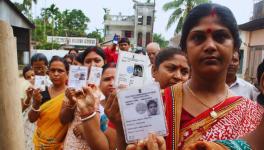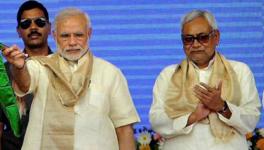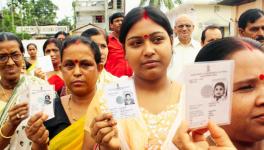India’s R&D Crisis Through the Lens of Bihar
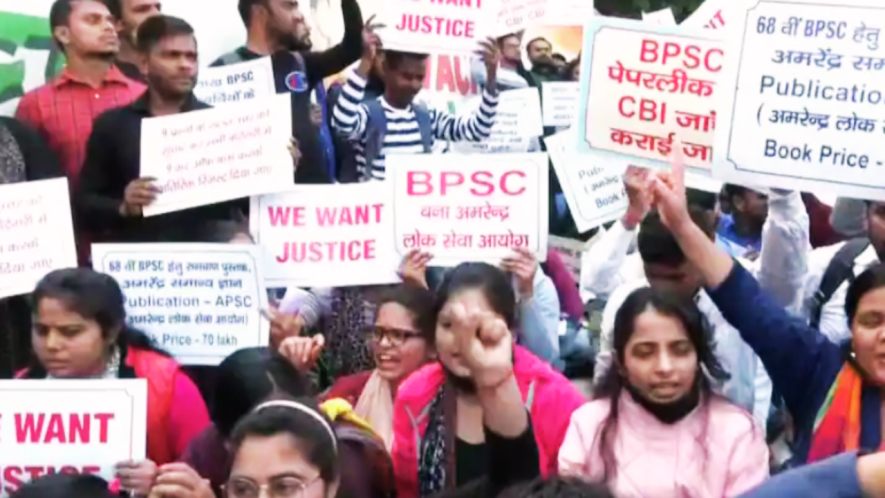
Image Courtesy: Twitter
More than half a century ago, the Kothari Commission (1964–66) laid the intellectual foundation for India’s national reconstruction, envisioning education as the bedrock of democratic development. It urged that at least 6% of GDP be allocated to education—a benchmark meant to secure the nation’s intellectual sovereignty and human capital formation.
Nearly five decades later, during the Manmohan Singh government, India’s liberal economic reforms expanded private participation across sectors, including education and healthcare. Even then, the Union Budget of 2011–12 devoted 5.04% of total expenditure to education—still below the Commission’s target, yet indicative of a residual commitment to public investment in knowledge.
In stark contrast, the Narendra Modi-led government, ideologically anchored in Right-wing majoritarianism and structurally beholden to crony corporate capitalism, has sharply curtailed state spending on education. The Union Budget for 2024–25 allocates a mere 2.5% to the sector—signaling not just fiscal austerity but a deliberate policy shift away from human development toward corporate consolidation. This chronic underinvestment has deeply eroded India’s research and innovation ecosystem, already strained by institutional inertia and bureaucratic neglect.
Read Also: Bihar Polls: Class Conflict & Course of Alliance Politics
India’s Gross Expenditure on Research and Development (GERD) now languishes at 0.64% of GDP—a dismal figure when set against China’s 2.4%, the United States’ 3.5%, or Israel’s global benchmark of 5.7%. The crisis is compounded by the private sector’s weak participation, which contributes barely 36–37% to India’s GERD, compared with 70–80% in advanced economies like the U.S., China, and South Korea. This structural lag exposes a deeper policy myopia—one that celebrates consumption over creation and spectacle over substance.
The contrast is jarring: while billions flow into religious festivals, temples, and ritual infrastructure, the nation’s laboratories, universities, and innovation hubs remain chronically starved of funds. The result is a widening chasm between faith-based expenditure and knowledge-based investment.
Bihar illustrates this paradox with striking clarity. Despite achieving a Gross State Domestic Product (GSDP) of ₹9.76 lakh crore in 2024–25, the state invests a negligible 0.01% of its GSDP in R&D—effectively excluding itself from the global knowledge economy. Such disparities highlight not merely fiscal constraints but entrenched institutional, cultural, and ideological barriers that privilege belief over empiricism.
Bihar: Lost Opportunity in Education, Healthcare
Bihar occupies a paradoxical position in India’s development narrative. Historically, it was the cradle of ancient universities such as Nalanda and Vikramshila, which embodied global excellence in scholarship and attracted intellectuals from across Asia. Once renowned as a hub of knowledge and cultural advancement, the state today struggles with some of the lowest social and human development indicators in the country.
Despite its intellectual legacy, Bihar has been unable to retain its youth, talent, and patients, who migrate in large numbers to other regions in search of quality education, employment, and healthcare. This accelerating outflow highlights not only the persistent neglect of critical sectors but also the erosion of Bihar’s potential to emerge as a knowledge-driven economy.
Recent data underscore the depth of this crisis. According to the 2011 Census, Bihar’s literacy rate stood at 63.8%, considerably below the national average of 74%. More recent surveys confirm the persistence of deficits in school infrastructure, digital access, and qualified teaching personnel.
Healthcare outcomes present a similarly grim picture: high maternal and infant mortality rates, limited hospital capacity, and chronic underinvestment continue to plague the state, especially when compared with more advanced counterparts, such as Kerala and Tamil Nadu (Aayog, 2021). These systemic deficiencies not only perpetuate cycles of poverty and exclusion but also exacerbate regional disparities within India’s federal framework.
Yet Bihar’s narrative cannot be reduced to decline alone. Its rich intellectual heritage and youthful demographic profile hold immense promise for renewal, provided the right policy interventions are undertaken. Human capital development—through robust investments in education, healthcare, and institutional capacity—remains central to any transformative agenda. Reclaiming Bihar’s legacy, therefore, requires a shift from short-term welfare schemes toward long-term structural reforms that prioritise inclusivity, accountability, and sustainability.
According to recent data, five lakh students from Bihar pursue higher education outside the state, accompanied by 52 lakh job seekers—totaling 57 lakh migrants—clarified the Labour Resources Minister.
Moreover, earlier reports estimated that annually over one lakh students leave Bihar, costing the state exchequer around ₹2,000 crore.
Literacy rates remain troubling—though rising from just 47% in 2001 to approximately 74.3% by 2023–24, Bihar still lags behind many states. Secondary-level dropout rates are astoundingly high—about 83%. Many schools lack basic infrastructure—only 0.8% had computers, 30.7% had no libraries, and nearly 29.4% lacked usable toilets.
Adding to educational woes, Bihar faces infamous exam paper leak scandals, severely undermining academic credibility. Over the past seven years, at least 10 major paper leaks have been reported, including NEET, police, and teacher recruitment exams—placing Bihar at the forefront of such incidents in India. Shockingly, NEET and PG papers were reportedly sold for ₹70–80 lakh.
Healthcare Vacuum and Missed Opportunities
Healthcare mirrors education’s shortcomings. Thousands of patients travel annually from Bihar to Delhi, Mumbai, Kolkata, Bangalore, and Chennai for treatment—while reverse inflow remains non-existent.
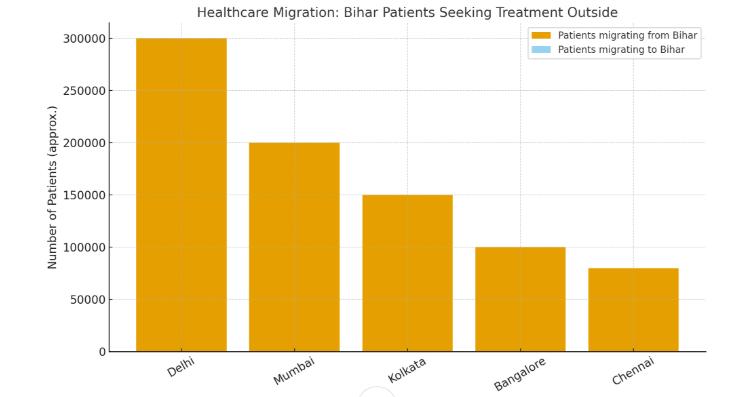
Political Apathy: Bihar’s Real Obstacle
In 2016, former President Pranab Mukherjee laid the foundation stone for Vikramshila University in Bhagalpur, envisioned to serve students from over 18–20 districts. Yet nearly a decade later, not a brick has been laid. This failure
reflects a broader pattern of political indifference, bureaucratic inertia, and symbolic grandstanding without execution.
A Roadmap to Reclaiming a Legacy
Bihar's underinvestment in education and healthcare is not merely a regional setback—it’s a national loss. The ongoing migration of students, workers, and patients drains human and financial capital, while denying the state its rightful role as a center of learning and care.
Bihar, the sacred land of the Buddha, deserves recognition as a global centre of learning. It is imperative that a “Buddha International University” be established, while the long-delayed construction of the “Vikramshila Central University,” inaugurated in 2016 by the then President Pranab Mukherjee, must finally commence without further procrastination. In addition, it is necessary to establish a new university in every district to provide quality education to all.
Each year, the mass outmigration of lakhs of Bihari students in search of higher education outside the state inflicts a staggering financial loss of nearly ₹2,200 crore on Bihar’s economy. Yet, legacy and human capital, Bihar possesses the undeniable with its intellectual potential to evolve into a genuine Educational Hub.
To realise this vision, it is essential to establish medical and engineering colleges in every district, to set up an AIIMS (All India Institute of Medical Sciences) at each divisional headquarters, and to open a branch of Jawaharlal Nehru University (JNU) at the state level. These initiatives would not only curb educational migration but also transform Bihar into a vibrant centre of knowledge, healthcare, and innovation.
Establishing qualitative institutions like AIIMS type “Medical Colleges” and JNU-type Universities are crucial first steps to make an “Educational and Medical Hub”. These should be complemented by systemic reforms: infrastructure upgrades, teacher training, anti-corruption measures, and robust electoral accountability. If Singapore—a small city-state—can attract global students and patients, why can’t Bihar lead within India and South Asia? The answer lies not in resources, but lack of ‘POLITICAL WILL and LONG-TERM VISION’.
Summing up
Addressing India’s R&D crisis through the lens of Bihar reveals that the roots of the problem are profoundly structural—extending far beyond the technical or financial domain. Bihar epitomises the broader malaise afflicting India’s research and innovation ecosystem, wherein deindustrialisation, policy neglect, and socio-political regression have converged to suppress scientific progress and technological advancement.
The systematic erosion of public education, healthcare, and higher learning institutions has created a fragile human capital base incapable of sustaining long-term innovation. Simultaneously, the ascendancy of crony corporate interests, coupled with the deliberate perpetuation of feudal, caste-based, and mythological narratives over rational and scientific thought, has further weakened the intellectual foundations of modern development.
These structural deficiencies have also translated into a severe employment crisis. India’s densely populated Hindi belt states—particularly Uttar Pradesh and Bihar—have increasingly become suppliers of both skilled and unskilled labour to other regions of the country. This mass labour migration is a direct consequence of deindustrialisation and the absence of inclusive economic opportunities under the corporate-led neoliberal regime.
It is estimated that approximately 40.10 million landless and lower-middle-class individuals have migrated from Bihar alone in search of livelihood. Most of these migrants endure deplorable and inhuman living conditions in the slums of major metropolitan cities such as Delhi, Mumbai, and Kolkata, where they remain confined to the unorganised sector.
Revitalising research and innovation in Bihar—and, by extension, across India—requires a decisive paradigm shift from symbolic religio-cultural politics to evidence-based policymaking anchored in scientific rationality, social equity, and democratic participation. The path forward lies in rebuilding robust public institutions, investing substantially in education and research infrastructure, and fostering a culture of critical inquiry and creativity.
In essence, the restoration of India’s scientific and developmental spirit must begin with reclaiming its most neglected regions, such as Bihar, where the potential for knowledge creation, innovation, and transformative growth remains immense yet unrealised. Only through such structural renewal can India aspire to emerge as a knowledge-driven economy rooted in inclusivity, reason, and progress.
India’s R&D trajectory through 2025 demonstrates an imbalance between its economic potential and investment in science. Bihar’s extreme shortfall further illustrates regional neglect. Without structural reforms—balancing national ambition with regional commitment and fostering a culture of inquiry—India risks perpetually supplying labour rather than leadership. Real transformation demands sustained political will, institutional reform, and a cultural pivot toward scientific rationality.
The writer is former Professor of Economics, University of Technology, Papua New Guinea, Universiti Utara Malaysia, and author (Researching Sustainable Economic Development, the Political Economy of the Global South, and India’s Socio-Economic Crisis). The views are personal.
Get the latest reports & analysis with people's perspective on Protests, movements & deep analytical videos, discussions of the current affairs in your Telegram app. Subscribe to NewsClick's Telegram channel & get Real-Time updates on stories, as they get published on our website.









